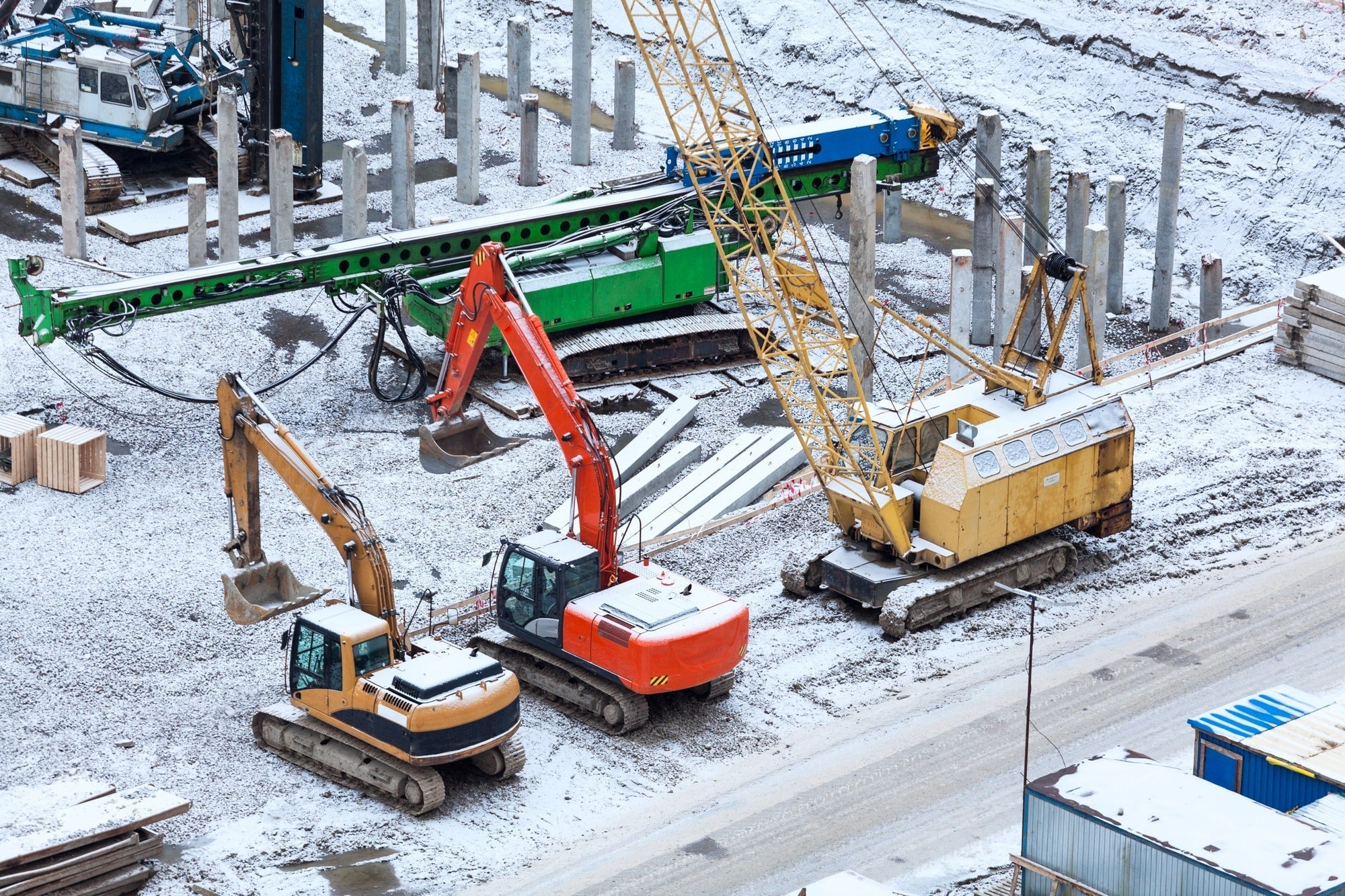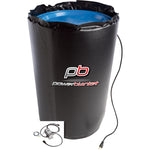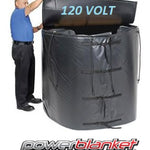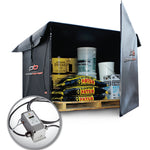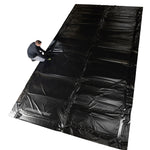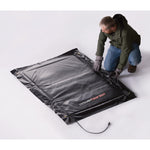You have no items in your shopping cart.
5 Ways to Keep Your Construction Site Warm in Winter
Article At-a-Glance
How Can You Safely Manage a Winter Construction Site?
To safely manage a winter construction site, implement best practices such as using temporary heat sources, insulating with tarps and blankets, covering open areas with plastic sheeting, employing windbreaks, and ensuring all equipment is properly winterized and stored indoors when not in use.
Key Takeaways
- Identify Winter Hazards: Understand the specific risks of winter construction, such as cold stress, icy surfaces, and equipment malfunctions, to ensure worker safety and project efficiency.
- Implement Safety Protocols: Use deicing procedures, snow removal strategies, and appropriate Personal Protective Equipment (PPE) to mitigate winter hazards effectively.
- Optimize Site Warmth: Employ temporary heat sources, insulate with tarps and blankets, and use windbreaks to maintain a warm and safe working environment.
- Winterize Equipment: Ensure all machinery is properly winterized and stored indoors when not in use to prevent damage and maintain functionality.
- Practical Tips for Worker Comfort: Provide clothing recommendations and warmth maintenance strategies to keep workers comfortable and productive in cold conditions.
When the weather gets cold, the best way to keep projects going is to add heat. Read on to learn the best ways to heat your construction site.

$499.99 USD
3' x 4' Extra-Hot Ground Thawing Blanket (120V)
If you're waiting for ground ice to melt, you're wasting time and money. Let Heat Authority show you how they can help.
Is it OK to build a house in the winter?
You can definitely build a house in the winter. However, there are some challenges that need to be considered such as weather, budget, and time constraints:
- Weather conditions: Winter weather can make it difficult to work outdoors. If there is snow or ice on the ground, it can be dangerous for workers and equipment. Cold temperatures can also slow down the drying time for concrete and other materials.
- Cost: Winter construction can be more expensive than building in the spring or summer due to the need for additional materials and equipment to deal with the weather.
- Schedule: Winter construction can take longer than building in the warmer months. This is because of the need to work around the weather and the additional time it takes for materials to dry if they get wet from snow and rain.
Despite these challenges, there are some advantages to building a house in the winter:
- Less competition: There is less competition for builders in the winter, which can lead to lower prices.
- Faster completion: Winter construction can be completed faster than building in the warmer months because there are fewer people working on other projects.
- Personal attention: Builders are often more available in the winter, which means you can get more personal attention from your contractor.
This last point is a great benefit, as more builders free to work generally means cheaper prices. But why are there more workers available? Why does less construction happen in the winter?

Does construction work slow down in winter?
As temperatures drop, building projects tend to slow down or stop completely. With more money to be made from spring to fall, some builders take time off or focus on smaller contract projects. Low outdoor temperatures make construction sites difficult to work in, as laborers have to bundle up to stay warm.
Cold weather is the easiest suspect to point a finger when it comes to winter season delays. Snow, ice, and rain sometimes prevents access to the site, and cold temperatures are often a hindrance to workers trying to stay warm and safe. Additionally, the ground often freezes during the winter, making it difficult to dig foundations and pour concrete.
However, it doesn’t have to be this way. For example, heated curing blankets can allow for curing concrete in cold weather. Other products can also help prevent winter slowdowns.
By applying the five tips below, you can keep your construction crews busy, your workplaces safe, and your clients happy with the continued pace of building no matter how cold it is outside.
5 ways to keep your construction site warm
Install a temporary heat source, such as a gas heater or electric space heater
If you are using a gas heater, make sure the area is well-ventilated. Be sure to keep any flammable materials away from the heater. If you are using an electric space heater, follow the manufacturer's instructions and keep it away from things that could catch on fire. Explosion-proof or hazardous area heaters are also useful for sites where hazardous materials are present.
Insulate the site with tarps, blankets, or foam insulation
Keeping a construction site warm is important, especially in cold weather. Tarps, ground thawing blankets, heated concrete blankets, and other construction blanket applications can help keep projects going throughout the winter.

Cover any open areas with plastic sheeting to keep the cold out
Doorways, windows, and other openings covered with heavy-duty plastic sheeting can help keep workers warm and materials safe from the elements. The right kind of plastic sheeting should be thick enough to withstand the wind, snow, and rain. Make sure the plastic sheeting is properly sealed and that any gaps or tears in the plastic sheeting are repaired to prevent cold air from getting in.
Plastic sheeting doesn’t need to be a permanent solution. Remove the plastic sheeting when the weather is warm enough to justify no longer needing it. Leaving the plastic sheeting on during warm weather can trap heat in and make the work environment uncomfortable.
Use windbreaks to block the wind and keep the heat in
Windbreaks are important to use during winter season construction due to their ability to:
- Reduce heat loss: Wind can cause heat to be lost from a building, making it more difficult to keep the building warm. Windbreaks help reduce heat loss by blocking the wind and creating a buffer between the building and the cold air.
- Increase energy efficiency: Windbreaks can increase the energy efficiency of a building by reducing the amount of energy needed to heat it. This can lead to lower energy bills and a more comfortable working environment.
- Protect workers from the cold: Windbreaks also help to protect workers from the cold by providing a sheltered area to work in. This can help to reduce the risk of hypothermia and other cold-related illnesses.
Windbreaks can be made from a variety of materials, including trees, shrubs, and fences. The type of material used will depend on the size of the windbreak, the climate, and your budget.
Make sure all equipment is properly winterized and stored indoors when not in use
Oils and fuels can thicken to the point of being unusable when temperatures get too low. As much as safety recommendations allow, keep them inside when not in use. Other equipment, like power generators and tools, should also be stored indoors to prevent rust.
Winterizing equipment is key for things that can’t be brought indoors. Propane tanks, for example, should only be stored outside. However, a heated tank jacket can keep your propane usable even in the coldest work environments.




